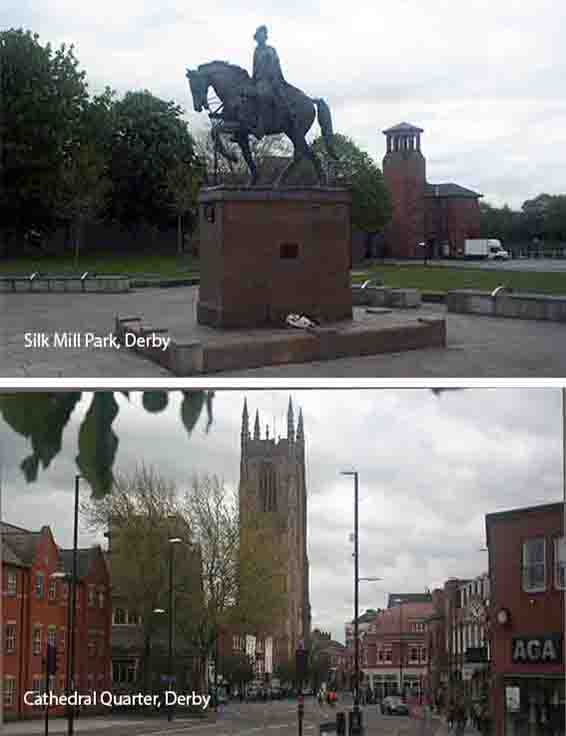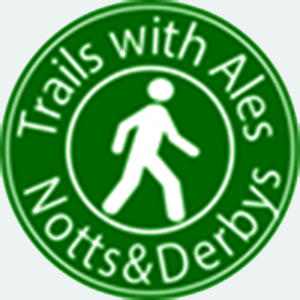
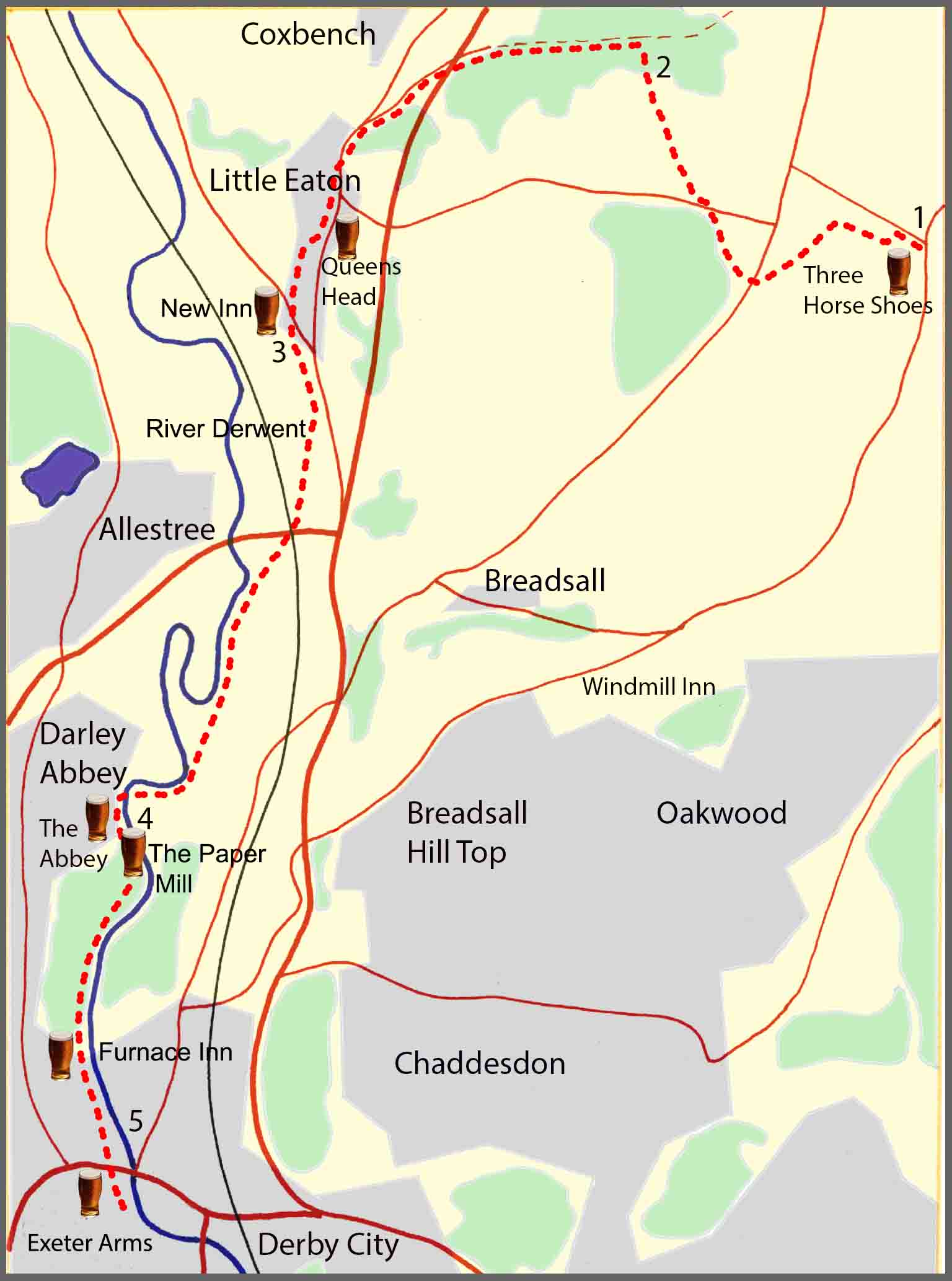
About this walk
The route described below starts at the Three Horse Shoes in Morley Smithy, passes Breadsall Priory, and continues on to the villages of Little Eaton and Darley Abbey before finishing in the City of Derby. There are excellent bus services from Heanor and Derby to and from the start and finishing points.
The overall route covers just over eight miles, much of it on flat ground following the River Derwent into Derby. There are seven pubs featured en route, fairly evenly spaced, serving good cask ales; so, at just over eight miles, it’s a comfortable four-pint walk, allowing you to arrive home calorie neutral and none the worse for wear. The pubs are: the Three Horse Shoes at Morley Smithy; the Queens Head and the New Inn at Little Eaton; the Abbey and the Paper Mill at Darley Abbey; the Furnace Inn on the outskirts of Derby; and the Exeter Arms at Derby. Several other good pubs are available in Derby.
As well as the good ale, there are also along the way a number of points of historical interest. These include: Morley Almshouses, Breadsall Priory, the Derby Canal and the Little Eaton Gangway, the Darley Abbey Mills, Derby Silk Mill, and the Roman settlement at ‘Little Chester’. Some background information about these points of interest, and relevant images, are featured in the route description below.
The route description
1. From the Three Horse Shoes Inn, walk down Brick Kiln Lane and after a few hundred yards turn left into Primrose Drive at the bottom of which you will find the footpath. Taking the footpath, walk across the fields in the direction of the electricity pylons. At the pylons, turn left along the footpath until you reach Morley Almshouses Lane. The Almshouses can be found a little higher up the lane on the right-hand side. Walk to the bottom of the lane and cross straight over Moor Road to take the footpath that will soon lead you along the outer edge of the grounds of the Breadsall Priory Marriott Hotel and out onto Morley Lane. Turn left here and walk down Morley Lane for just over a hundred yards where, on the right-hand side, you will find the footpath that takes you across the field and onto the Breadsall Priory’s Moorland golf course. Follow the footpath across the golf course which will take you in the direction of woodland which you should see on the horizon.
The terrace of six almshouses is a Grade II listed building founded by and built for Jacynth Sacheverell in 1656. On the central gable above the two main front doors is a decorative feature bearing the Sacheverell coat of arms. The Breadsall Priory hotel is situated in the grounds of a former Augustinian priory which was established by a member of the Curzon family, before 1266, and dissolved in 1536. The original building was demolished in the 16th century and a private home, also known as Breadsall Priory, was built on the site. The Grade II listed house and stables form part of the Breadsall Priory Marriott Hotel, said to be the oldest Marriott hotel building in the world.
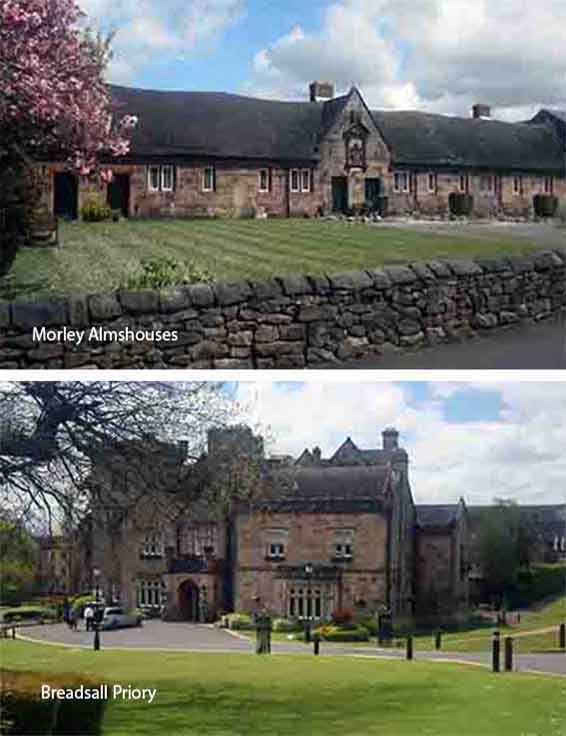
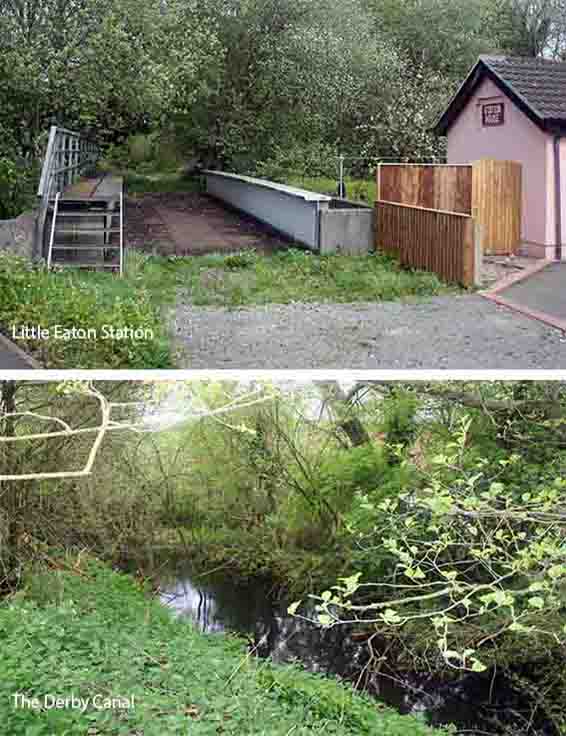
The Derby Canal was completed by Benjamin Outram in 1796 and connected Derby with the Trent and Mersey Canal at Swarkestone, and with the Erewash Canal at Sandiacre. A spur of the canal continued north from Derby to Little Eaton where an early tramroad, known as the Little Eaton Gangway (officially named the Derby Canal Railway) linked Little Eaton to coal mines at Denby. Wagon loads of coal, hauled by horses along the gangway, were unloaded on to canal barges at Little Eaton Wharf.
Thanks to Reg Simpson’s research, Severn Trent Water has been able to confirm that these air vents are access points to groundwater tunnels that run alongside the River Derwent. Constructed in the Victorian era, the tunnels are of open brick design that were used to intercept groundwater from the surrounding hillsides to enable it to gravitate, via the tunnels, to the Little Eaton water treatment works. The ‘tunnel water’, as it was referred to then, was a source of filtered groundwater that needed very little treatment other than disinfection. As Derby’s need for water increased in the 1930’s, water was abstracted directly from the river and, once treated by new improved techniques then available, it was blended with the ‘tunnel water’. Today, the Little Eaton water treatment works has advanced water treatment techniques that do not require the use of the ‘tunnel water’, though Severn Trent still has the abstraction rights.
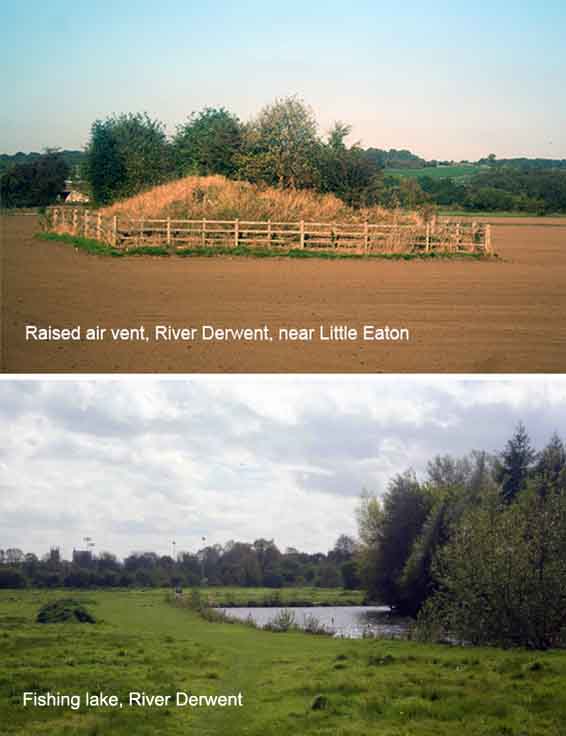
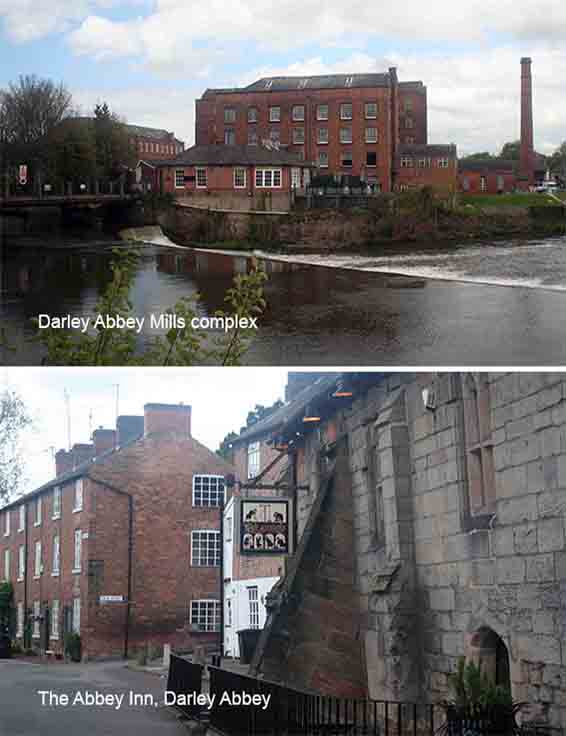
Built in 1783 by Thomas Evans, the Darley Abbey Mills were powered by water for the spinning of cotton using the revolutionary technology developed by Richard Arkwright at his mill at Cromford. The mills at Darley Abbey are part of the Derwent Valley Mills World Heritage Site that extends along the Derwent valley from Cromford through to Derby and is considered to be the birth place of the modern factory system. The factories and technology developed in the Derwent valley proved so successful that by 1788 there were over 200 Arkwright-type mills in Britain and Arkwright’s inventions and system of organising labour were soon exported to Europe and the United States. The Abbey Inn is one of only two remaining buildings from the Agustinian Monastry of Darley Abbey. It was constructed in the 15th century and it is thought to have been part of the Abbot’s residence. The building appears to have been roofless for most of its post-dissolution life; a new roof was added in the 1920s and the building reinforced in the 1950s following some movement within the walls. The building was renovated to its present state in 1978. The other surviving monastic building makes up part of a private dwelling on Abbey Lane.
5. Leaving the Abbey Inn, follow the signs for Darley Park. Keeping to the right-hand side of the river, walk all the way through Darley Park. Pass the Derby Rowing Club on your left and go under the bridge that originally took the Great Northern Railway over the Derwent. Follow the river path into the city of Derby until you reach the Silk Mill Museum. Turn right across Silk Mill Park and up Amen Alley to Iron Gate. Here, across the road and to the left, you will find The Standing Order. Further up Iron Gate, to the right, is the Old Dolphin Inne with other real-ale pubs not far away.
Built in 1721 for John Lombe, the Silk Mill is the southern-most mill in the Derwent Valley Mills complex and is often referred to as the world’s first factory. John Lombe died in 1722 in mysterious circumstances, believed to have been poisoned by an Italian assassin in retribution for stealing trade secrets associated with the spinning of silk. In the centre of Silk Mill Park is a statue of Bonnie Prince Charles commemorating his stay in Derby in 1745, whilst on his way south with some 6,000 troops in his failed attempt to seize the British crown. The Bonnie Prince and his troops got as far as Swarkestone, just south of Derby, when the decision was made by his council to return to Scotland because of lack of English and French support and rumours of large government forces being amassed.
